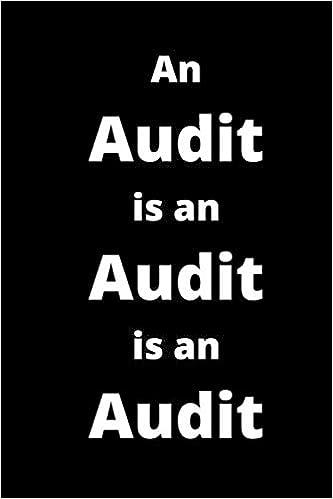Answered step by step
Verified Expert Solution
Question
1 Approved Answer
Auditing Proceedures - Audit Sampling, please explain and include details and do not copy answer from other sources. Thank you! Read the case. Then answer
Auditing Proceedures - Audit Sampling, please explain and include details and do not copy answer from other sources. Thank you!

Read the case. Then answer the questions based on it. BACKGROUND: Stratification can be used in audit sampling to divide a population into homogenous subgroups called strata." The auditor can sample these strata separately, examine the results separately, or combine the results to provide an estimate of the total population characteristics. Smith Jones CPA was auditing the financial statements of Titan Industries. When auditing accounts receivable, he realized the population was diverse and could be divided into two "separate" smaller populations. There were 5 accounts receivable that in total were $10,000. The remaining 45 account receivable balances totalled $17,000. Smith Jones was concerned that a random sample of the entire population would miss many of the 5 balances that totalled $10,000 but did not want to eliminate the possibility of testing many of the other 45. He decided to consider a stratified sample. 1. Why did Smith Jones CPA consider stratifying the population? 2. Why didn't Smith Jones CPA choose to sample from the population as a whole? 3. Why is it important to not "skip" sampling the other 45 balances
Step by Step Solution
There are 3 Steps involved in it
Step: 1

Get Instant Access to Expert-Tailored Solutions
See step-by-step solutions with expert insights and AI powered tools for academic success
Step: 2

Step: 3

Ace Your Homework with AI
Get the answers you need in no time with our AI-driven, step-by-step assistance
Get Started


